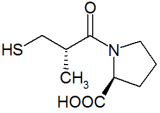Rietveld RR, van Weert HCPM, ter Riet G, and Bindels PJE. Diagnostic impact of signs and symptoms in acute infectious conjunctivitis: systematic literature search. BMJ 2003; 327:789.
* PRACTICE RECOMMENDATIONS
Despite recommendations in ophthalmologic texts for differentiating bacterial from viral conjunctivitis, no research supports the usefulness of any signs or symptoms to make this distinction. This raises validity questions about treatment studies based on clinically diagnosed bacterial conjunctivitis.
* BACKGROUND
Primary care providers often prescribe antibiotics based on physical findings of papillary conjunctivitis, mucopurulent discharge, and rapid spread between eyes. However, though often recommended in ophthalmologic texts, the evidence supporting these criteria is unknown.
* STUDY DESIGN AND VALIDITY
The researchers searched 4 databases (PubMed, Embase, CINAHL, and Cochrane Controlled Trials Register) and manually searched bibliographies from relevant articles, guidelines, and textbooks to find 2903 articles regarding diagnostic accuracy. They included studies comparing signs, symptoms, or both with bacterial culture.
After they excluded studies of newborns, eye surgery, and Chlamydia trachomatis patients, only 1 article remained. The methodology of this study did not hold up to their qualitative data analysis.
One investigator conducted the search, but 2 reviewed the articles. They do not mention how they resolved disagreements (if they existed) about study inclusion. (Level of evidence: 1a)
* RESULTS
This systematic review did not find any evidence to support or refute the clinical criteria physicians commonly use to distinguish bacterial from viral conjunctivitis.
DRUG BRAND NAMES
Amoxicillin-clavulanate * Augmentin Azithromycin * Zithromax Candesartan * Atacand Captopril * Capoten Fluoxetine * Prozac Nortriptyline * Aventyl, Pamelor Simvastatin * Zocor Valsartan * Diovan
Eric M. Rotert, MD, and Beth Potter, Md, Department of Family Medicine, University of Wisconsin-Madison. E-mail: erotert@wisc.edu.
COPYRIGHT 2004 Dowden Health Media, Inc.
COPYRIGHT 2004 Gale Group



